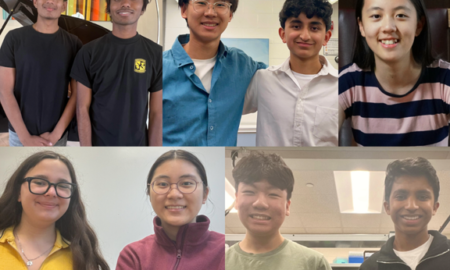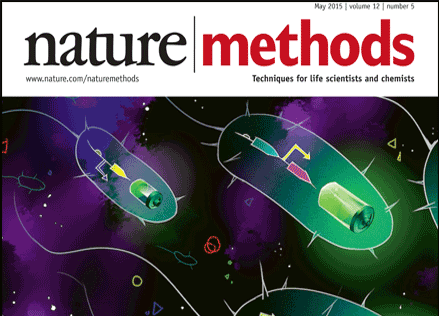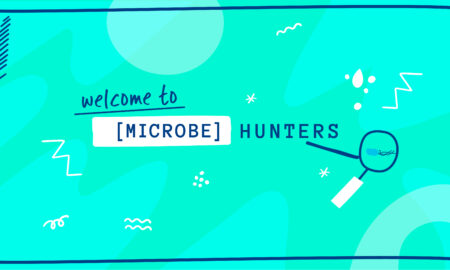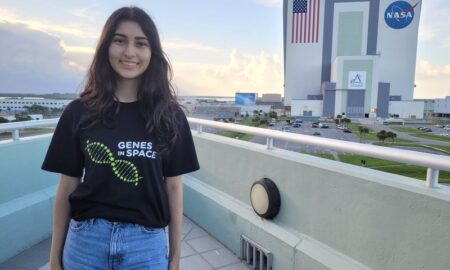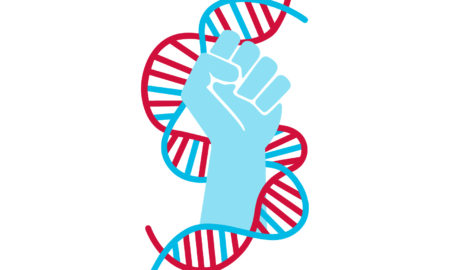Meet a scientist: Dr. Elaine Ostrander unlocks secrets from the dog genome
 Over the last two decades, or longer, you have been bombarded with news about efforts to sequence and understand the human genome. But perhaps you’ve heard a lot less about the quest to decipher the genetic information carried by our canine companions. Most people will agree that dogs are remarkable for many reasons, especially as the species that shares a truly unique kinship with humans. But dogs as a species have also emerged as a premier model for the study of the genetic underpinnings of morphology, physiology, behavior, and disease.
Over the last two decades, or longer, you have been bombarded with news about efforts to sequence and understand the human genome. But perhaps you’ve heard a lot less about the quest to decipher the genetic information carried by our canine companions. Most people will agree that dogs are remarkable for many reasons, especially as the species that shares a truly unique kinship with humans. But dogs as a species have also emerged as a premier model for the study of the genetic underpinnings of morphology, physiology, behavior, and disease.
Today we are excited to share a special interview with a leading dog genomics scientist. Dr. Elaine Ostrander is a pioneer in the field of dog genomics and currently works for the National Institutes of Health, where she is Chief of the Cancer Genetics and Comparative Genomics Branch at the National Human Genome Research Institute.
Disclaimer: NHGRI does not endorse or recommend any commercial products, processes or services. The views and opinions of NHGRI staff do not necessarily state or reflect those of the U.S. Government, and they may not be used for advertising or product endorsement purposes.
A scientific paper from Dr. Ostrander’s lab was the inspiration for our Dog Genetics Lab!
- Cadieu et al. (2009) Coat variation in the domestic dog is governed by variants in three genes. Science 326, 150–153. DOI: 10.1126/science.1177808
How did you become interested in dog genomics?
It became clear with new discoveries in genomics, you could really study any mammalian system you wanted. You could look at the natural world around you and say, ‘Huh, that’s an interesting mammal, and they do this interesting thing, or they have this interesting trait.’ Anybody could study it now because the human genome project really exploded our opportunities.
Dogs were great because there are 350 or so different breeds, and they are so different from one another. They are different in size, they are different in shape, and they are different in behavior. The initial impetus was to try and understand the genetics of these different behaviors—herding and pointing and different personality traits—and see if that would shed light on our understanding of ourselves as a species.
Can you share a recent finding in the field of dog genomics that you found particularly interesting?
One of the post-doctoral fellows in my lab got interested in dog ear position—ears up, ears down, big ears, little ears. He had sequences from dogs with big ears and little ears, and up ears and down ears, and he was able to find the genes and variants responsible for those traits. But what was fascinating was when those same genes are mutated in humans, they are responsible for deafness. So in dogs, these genes are responsible for ear morphology. But in the same general organ system, ears, when these genes are mutated in humans, we see deafness.
So he pushed it a little further, and he looked at some of the body size genes. We found a couple of genes that really make big dogs big. And they don’t just make them skeletally big, they make them heavily muscled—think Saint Bernards and Newfoundlands. When humans have these genes mutated, we see things like obesity and metabolic disease.
So things that breeders select really hard for to get a particular aesthetic, when those same genes get messed up in humans we get disease. We realized that studying things that breeders have been doing for years—this experiment that breeders have been doing to get a dog like this and a breed like that—would inform us about human health and human biology.
Dogs get almost everything that humans get—they get cancer, diabetes, heart disease.
Can you explain why studying genetic diseases in dogs can be beneficial for understanding human health?
Dogs get almost everything that humans get—they get cancer, diabetes, heart disease. When you start to look at the pathology, the response to treatment, the presentation, it mimics what we see in humans shockingly well.
In dogs, their lifespan is much shorter so you can collect a family of great-grandparents, grandparents, parents, and offspring that are all alive at the same time. This lets you really look at the segregation of a trait and know with this family is something genetic going on, but with this other family, it’s probably just a few sporadic cases.
Breed structure also helps. Let’s say a Skye Terrier walks into my office with epilepsy. Epilepsy is really hard to study in humans—there are many kinds of epilepsy. But I can combine data from a Skye Terrier, a West Highland White Terrier, a Scottish Terrier, and many other terriers to get more statistical power. Even though all these terriers are different breeds, they share a very recent common ancestor. They are probably all getting epilepsy, those that have it, because they have the same mutation, from the same recent common ancestor.
The next day, in walks an Irish Setter with epilepsy. I can combine their data with a variety of other setter and retriever populations. It’s the same thing—these breeds share a recent common ancestor. But the genes I find in the terriers are probably going to be different than the genes I find in the setters.
It’s like each breed has a banner by virtue of their breed name. Unfortunately, people don’t have those labels. If you walk into a room full of people with epilepsy, you don’t know how to divide them up. There may be some symptoms that help you somewhat, but epilepsy is a really complex disease, there are a lot of differences in how people present, and so it becomes very hard. But it is much simpler in dogs, and people have been doing that successfully in dogs with everything from epilepsy to diabetes, to cancer, to motor neuron disease, to arthritis. Anything you care to think about, there are breeds of dogs that get it, and we can use that breed population structure to help solve these problems.
I read that you knew you wanted to be a scientist from a fairly early age. What advice would you give to students interested in becoming scientists?
Study something you really want to understand—something that’s going to keep you awake at night and force you to be creative and innovative. When you talk to high school students, they’re interested in such cool things. I’ve judged a lot of high school science fairs, and some of these students have fascinating ideas and really interesting things that they want to test and do. You just want to say to them, ‘Don’t lose this, keep doing this!’ Hopefully, some of them will.
Is there anything else you would like to share with our readers?
Whatever it is you do in life, there is room to get involved in science as a citizen scientist. There are people who are out surveying birds, there are people who are doing cool stuff in the ocean. I was in Hawaii and there were people helping out at the University of Hawaii to set up devices for measuring global warming—there’s always something.
This interview by Dr. Allison Nishitani has been edited for length and clarity.


